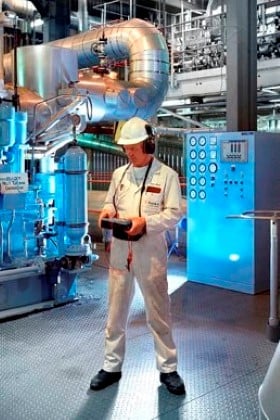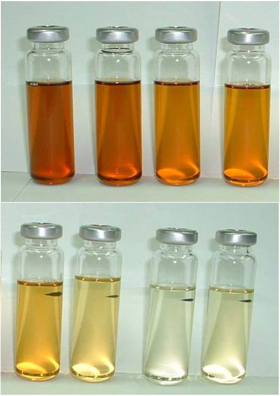Innovation update July 2016
Innovation update - July 2016
Welcome to our new quarterly e-newsletter, Innovation Update. This regular update will provide you with the key highlights from our innovation portfolio. We hope you find it of interest
Our Network Innovation Allowance projects

Earlier this month we published our Network Innovation Allowance (NIA) summary report, and an annual progress report for each of the 16 projects we have registered under this new innovation funding mechanism. We expect significant learning to emerge from this exciting funding opportunity and although still in the early stages, we are already able to report some key findings from our new NIA projects, which include:
- Demand Scenarios – will provide a better understanding of the impact of heat pumps and other low carbon technologies on our network; this will improve our low voltage network designs and save money for customers
- Combined Online Transformer Monitoring – a project which will investigate the regeneration of transformer oil to extend the life of our transformers
- Value of Lost Load – a programme of customer engagement which will deliver a comprehensive understanding of the financial and social impacts of power cuts on different customer segments.
Our industry regulator, Ofgem, has introduced the NIA as part of the current price control period RIIO which runs from 2015 - 2023. The NIA is a set allowance which each network licensee receives as part of their price control framework. Funding is provided for smaller scale research, development, and demonstration projects covering all types commercial, technological and operational innovation.
Smart Street trials continue

Our £11.5 million Smart Street project is trialling innovative voltage control techniques to enable our networks and customers’ appliances to perform more efficiently and make it easier to adopt low carbon technologies onto the electricity network. It’s the first demonstration in Great Britain of a fully centralised, low voltage network management and automation system.
The trials began in January this year and will take place over a two-year period using a two-week-on/two-week-off test regime. This will enable us to compare one year’s worth of Smart Street data with normal network operation, so we can calculate the overall benefits of Smart Street and understand any impact on the 67,000 customers served by the trial circuits in Manchester, Wigan, Wigton and Egremont.
During the technology build we have installed 498 Weezaps and 126 Lynx devices, 49 end-point monitors, 84 low voltage capacitors, six high voltage capacitors and five on-load tap changing transformers. All of this equipment has been integrated into our network management system and is controlled by bespoke software developed by Siemens.
Now that the trials are live we have begun to extract system data and pass this to our academic partners for analysis. Copies of this raw monitoring data are available on the Smart Street website.
A key hypothesis of Smart Street is that customers will not perceive any change in their electricity supply as a consequence of the trials. Our next step is to hold a series of focus groups with customers to understand whether they do notice any changes. The project runs until April 2018.
Respond

Our low carbon project, Respond, will deliver an intelligent approach to managing fault current – the instantaneous surge of energy which occurs under fault conditions.
Respond is a revolutionary solution to the issue of increasing fault level on the network and will bring significant savings for our customers. The £5.5 million project, which runs from January 2015 until October 2018, will maximise the use of our existing assets, reduce costs to customers and speed up the connection of new demand and generation.
In May this year, we hit a major milestone as we completed the installation of equipment at a number of selected sites and the Respond project went live.
Working with our project partner Schneider Electric, the Respond ‘Fault Level Assessment Tool’ has been successfully integrated into our new network management system. This intelligent software uses network data to predict fault level in near real time. When fault level approaches or rises above our equipment ratings, the tool will ‘enable’ one of three innovative techniques designed to manage fault current safely: Adaptive Protection, the IS-limiter or the Fault Current Limiting (FCL) service.
The FCL service is a unique opportunity for large demand and generation customers to earn rewards by selling us a fault current limiting response through a managed service agreement. An extensive customer survey across a range of industrial and commercial market sectors has shown that there is an appetite among customers in the non-manufacturing sector to provide this kind of service.
We are now engaging with organisations in the North West who participated in the customer survey and indicated a willingness and ability to trial the FCL service. We are seeking to enter into managed agreements with up to five industrial and commercial demand and generation customers, to trial the technical and commercial elements of the FCL service for a defined twelve month period. Participants will be consulted throughout the trial and the full results will be published at the end of the project.
Celsius project hots up

Celsius is the first of our projects to be funded under Ofgem’s Network Innovation Competition.
The £5.5 million Celsius project will explore innovative, cost-effective ways of managing potentially excessive temperatures at distribution substations and is the first solution of its kind in Great Britain. Celsius will release additional capacity, reduce long-term costs for customers and avoid early asset replacement.
The first stage of Celsius is to gather data from 520 substations, using new temperature monitoring equipment. The data will be analysed to improve our understanding of the relationship between an asset’s temperature, load and environment and to develop a ‘Thermal Ratings Tool’. Secondly, a range of cooling techniques will be trialled on 100 of the distribution substations to demonstrate the benefits of each technique.
Since the start of the year, the Celsius project team have made great progress. We have begun regular meetings with our project partners ASH Wireless and Ricardo to develop the Celsius technology. We have also selected the 520 substation sites which will be monitored as part of the project and are now busy designing the installation plan. In June we issued our customer engagement plan to Ofgem which sets out how we will interact with our customers and stakeholders during the project.
Earlier this month the Celsius website went live. The website will be used as the main channel for disseminating updates on our progress throughout the project.
C2C project becomes business as usual

Our Capacity to Customers project (C2C) which ran from January 2012 – March 2015 has now been successfully integrated into our business as usual processes, known as ‘Managed Connections’.
The C2C trial tested the willingness of our existing customers to reduce their demand following a fault in exchange for payments. We also asked new connections customers to accept a C2C contract in return for waiving reinforcement costs.
The project successfully proved that our industrial and commercial customers are willing to sign up to this kind of demand side response contract which rewards customers for being flexible with their demand for electricity and which can help us manage the network by releasing capacity where and when we need it.
From 1 July 2016 all generators above 200kW applying for a new connection with Electricity North West are offered a managed connection. To facilitate this we have updated all relevant policies, changed our business processes, drawn up new contract templates and briefed all colleagues affected by the change.
Our first business as usual demand side response agreement has been signed with United Utilities as an alternative to installing a new transformer at one of our primary substations. If a fault occurs, United Utilities will remain off supply for up to eight hours to allow us to restore supplies to the majority of customers connected to this primary substation and to repair the fault. The agreement covers up to six events over the three-year agreement period and secures over £4 million of efficiencies.
C2C is the first of our larger innovation projects to start transforming how we offer new services and value to our customers. Over the next few years we expect to see many similar changes as our projects progress from areas of research to become business as usual.
Value of Lost Load

Electricity supply interruptions have financial and social impacts on customers, which vary by season, time of day, customer load and customer type. Understanding the value of lost load (VoLL) is important in network planning and investment strategy and will become increasingly important as customers become more reliant on electricity in the low carbon future.
Through a programme of engagement with a comprehensive range of domestic customers and small to medium enterprises (SMEs), this NIA project will deliver a greater understanding of VoLL by customer segment. The biggest challenge of this research is to understand how this value is likely to change in the future, with greater dependency on electricity.
This project runs from October 2015 – January 2018, culminating in a comprehensive assessment of how VoLL should be defined across a range of customer segments and how this revised model will help DNOs better plan their network investment and customer strategies.
Since the project began we have completed:
- A literature review of published work relating to VoLL, which we have incorporated into a comprehensive research approach and documented in a methodology statement
- A peer review of the VoLL methodology
- Interviews with key stakeholders, DECC and Citizen’s Advice
- A customer engagement plan and data privacy statement
- Four customer focus groups, each representing a key customer segment, to help us develop our research and communication materials.
Earlier this month we published a revised methodology statement which incorporates refinements to the approach following consultation with our key stakeholders and a peer review of the method.
Our next steps will be to publish the key findings from four customer focus groups and to carry out a pilot survey with an engaged customer panel and 700 previously unengaged customers.
Optimising Oil Regeneration for Transformers

This NIA project follows the success of previous research projects which investigated transformer oil regeneration as an alternative transformer management option. The technique offers the best opportunity to improve a transformer’s health index and suggests that oil regeneration carried out at the end or near the end of a transformer’s nominal life can extend life by approximately ten years.
This project explores the optimum point to apply oil regeneration to a transformer fleet. It is acknowledged that the life of oil impregnated paper insulation determines the maximum potential life of a transformer, although other factors may cause it to fail earlier. This project scope aims to determine if mid life oil regeneration can reduce the rate of paper degradation, and thereby further extend the lifespan of the transformer compared to oil regeneration at end of life.
We will monitor ten 33kV paired transformers and three 132kV paired transformers (13 sites, 26 transformers) which are at various stages of their design life. At each site, only one of the transformers will undergo oil regeneration.
We are currently installing online monitoring equipment on both transformers at each site to allow comparison of their oil condition and to determine the theoretical life extension over time. These results will be fed into data visualisation software to allow consistent comparison.
We will work closely with industry experts to validate the data and calibrate the life extension results. The project will allow us to develop our understanding of the effects of life extension on transformer failure modes and maintenance requirements and to identify the optimum window for oil regeneration in the life cycle of transformers.
Useful links
You can find out more detailed information about all of innovation projects using the following links:
- Our new innovation strategy published in March 2016: www.enwl.co.uk/innovation-strategy
- Our LCN Fund project Smart Street: www.enwl.co.uk/smartstreet
- Our LCN Fund project Respond: www.enwl.co.uk/respond
- Our NIC project Celsius: www.enwl.co.uk/celsius
- Our NIA project Value of Lost Load: www.enwl.co.uk/voll
- Our other NIA projects: www.enwl.co.uk/nia
- Meet the Electricity North West innovation team: Meet the team
- The Electricity Networks Association smarter networks portal: www.smarternetworks.org
Or contact us at innovation@enwl.co.uk